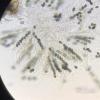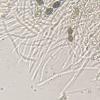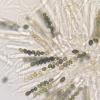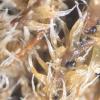
28-12-2025 12:08
Margot en Geert VullingsThis possible Karstenia was found on the bark of d

21-12-2025 21:32
Pol DebaenstHello, Garden, Burgweg 19, Veurne, BelgiumOn 10/1

26-12-2025 21:19
Arnold BüschlenPithyella chalaudii Priou. Ist als Bryoparasit in

21-12-2025 09:32
Hello.A tiny ascomycete found embedded in wood in

18-12-2025 21:17
Pol DebaenstThe identification took me to Byssonectria deformi

24-12-2025 17:08
Hulda Caroline HolteHello, I have found this propoloid ascomycete on
 Found this asco on Racomitrium, the moss was dead or nearly so.
Found this asco on Racomitrium, the moss was dead or nearly so.Spores with a germslit, and it seems like it have a thin gealcoating.
14x8
13x9
11x7,5
12x7,5
12x8
11x8
12x8
Asci is lugols and 10koh+Lugols negative
Parafyses septate.
Anyone have an Idea about genus?
Regards

perhaps a Coniochaeta?
Best regards, Lothar

Yes was thinking of that genus, but was not sure.
the whole fruit body have setae.
there is a key i see, but is it many species who has moss as substrate?
Regards

Hello Robin,
maybe C. ligniaria?
The moss is fully bleached - maybe this has a reason. Perhaps manure or urine of an animal?
Coniochaeta-species usually grow on dung or wood, as nutrient-loving saprobes. Moss as substrate is unusual, but as the species are quite polyphageous perhaps not a wonder - and for me it is unlikely that there are species of this genus that are (exclusively) bryophilous.
Best, Lothar



